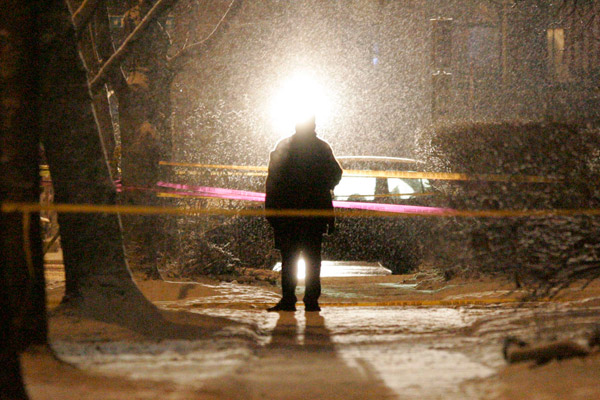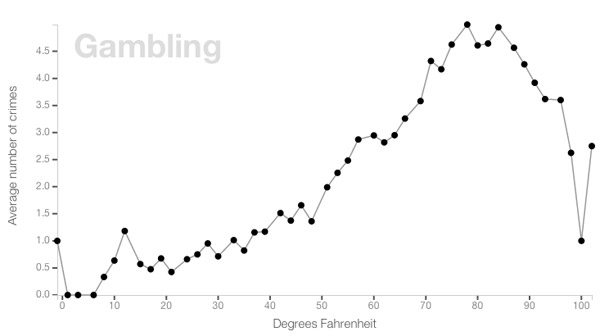
Charles Cherney/Chicago Tribune
One of the big questions last year, as Chicago's homicide rate climbed during an unusually warm spring, was whether the weather was contributing to the city's first spike in homicide rate in a few years, an increase that brought the city national attention. The police downplayed it—which makes sense, given that it's the factor most out of their control—but it regularly came up as an explanation.
I looked around, and there has been some research into crime and temperature. The conventional wisdom is 1) homicide increases with temperature, but 2) only up to a point—once it gets warm enough, homicide declines. There's some logic to this: some homicides are crimes of opportunity, and a lot of Chicago homicides are committed outdoors. Uncomfortably hot weather means fewer people outdoors; fewer people outdoors means fewer homicides.
But homicides are infrequent, even in Chicago, so you need a lot of data to get a reasonable sample, and it helps to get other forms of crime as a comparison.
So Eric Van Zanten, a local web developer, took five million crime reports from 2001 until now, and did this:
1. Take all of the days since 2001 and group them by the reported high temperature
2. Take all of the crimes committed on those days and add them together
3. Divide the number of crimes committed at a given temperature and divide it by the number of days to get an average
The result is graphs of the average number of crimes—for lots of different crimes—by temperature. And they follow the patterns you'd expect. Total crimes increase up to 89 degrees, and then begin to fall. Which is exactly the temperature that criminologist James Alan Fox found in a study of crimes and temperature in Columbus, Ohio, in 2007:
A study Mr. Fox conducted of violent crime outside of the home in Columbus, Ohio, for all of 2007 showed that violent crime is highest when the temperatures reach the mid-80s but starts dropping when the mercury climbs past 90 degrees.
Other studies have found different "inflection points," which also makes some sense: what's considered too hot to go out could be different in Minneapolis than Columbus, for obvious reasons.
At the level of individual types of crime, Van Zanten's findings also make intuitive sense. Crimes like assault, battery, criminal damage, homicide, and so forth increase with temperature; "offense involving children," kidnapping, prostitution, and intimidation don't show a distinct pattern.
My favorite one was gambling, which the CPD is going to crack down on, and which there's absolutely no reason to do outside unless it's nice out:

I can see ways to push this analysis further: using heat index instead of temperature (85 degrees with zero percent humidity is nice, 85 with 95 percent humidity is awful); factoring in precipitation (if it's pouring down rain, that could depress crimes even when the temperature is moderate), though with this many data points that theoretically evens out. But as is, it's really fascinating.



